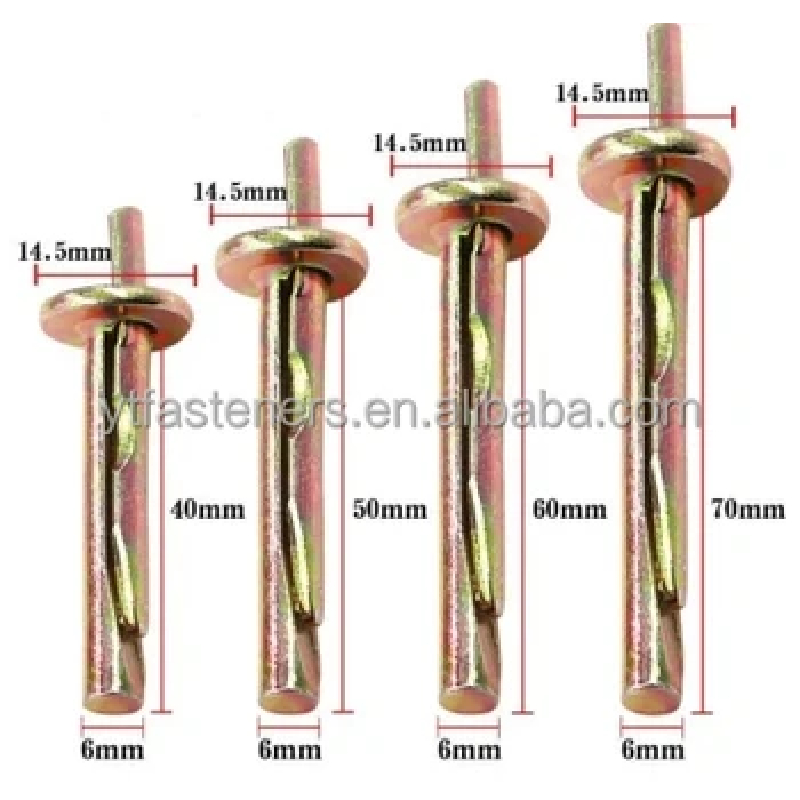Dec . 04, 2024 05:04 Back to list
exterior anchor bolts
Understanding Exterior Anchor Bolts Types, Applications, and Installation
Anchor bolts are essential components in various construction and engineering projects, particularly when it comes to stabilizing structures and ensuring their longevity. Among the various types of anchor bolts available, exterior anchor bolts play a crucial role in anchoring structures to their foundations, offering both stability and safety. This article dives into the significance of exterior anchor bolts, their types, applications, and installation methods.
What Are Exterior Anchor Bolts?
Exterior anchor bolts are robust metal fasteners that secure structures to concrete foundations, making them vital in outdoor applications. They come in various shapes and sizes, designed to hold heavy loads and withstand environmental factors such as wind, rain, and temperature fluctuations. These bolts are especially important in preventing structures from shifting or tipping during adverse weather conditions.
Types of Exterior Anchor Bolts
1. Expansion Bolts These are designed to expand when installed in a pre-drilled hole in concrete or masonry. The expansion mechanism cushions the bolt, providing a strong hold against shear forces. Expansion bolts are widely used for mounting heavy equipment, railings, and fixtures outdoors.
2. Sleeve Anchors A popular choice for anchoring in concrete and masonry, sleeve anchors consist of a bolt with a sleeve that expands when the bolt is tightened. Their versatility makes them suitable for a variety of exterior applications, including securing fences and poles.
3. Chemical Anchors These utilize a resin or adhesive to bond the bolt to the surrounding material, providing an extremely strong anchor point. Chemical anchors are particularly useful in situations where traditional mechanical anchoring might not provide adequate strength, such as in cracked or poor-quality concrete.
4. Lag Bolts Often used in wooden structures, lag bolts can also be employed in exterior applications when fastening wood to concrete or masonry. Their large diameter and coarse threads provide a strong grip, making them ideal for securing wooden beams to foundations.
Applications of Exterior Anchor Bolts
Exterior anchor bolts are used in various applications across multiple industries. In the construction sector, they secure buildings, bridges, and towers to their foundations. They are also crucial in the installation of outdoor fixtures such as handrails, signage, and electrical equipment.
exterior anchor bolts

In the agricultural sector, anchor bolts are utilized to secure equipment and structures like silos and greenhouses, ensuring they remain stable under harsh weather conditions. Similarly, in the industrial world, they are essential for anchoring heavy machinery and storage racks, preventing accidents and ensuring operational safety.
Installation Methods
Installing exterior anchor bolts requires careful planning and execution to ensure that they meet the necessary load requirements. Here are general steps for installation
1. Site Assessment Before installation, a thorough assessment of the site is necessary to determine soil conditions, load requirements, and environmental factors that may affect the anchor bolts.
2. Drilling Holes Based on the type and size of the anchor bolts, appropriate holes must be drilled in the concrete or masonry. The depth and diameter of these holes should align with the manufacturer's specifications.
3. Placing the Bolts After drilling, the anchor bolts should be inserted into the holes. For expansion and sleeve anchors, they may require manual or mechanical assistance to secure them in place.
4. Tightening Once the bolts are positioned, they need to be tightened according to the recommended torque specifications. This step is crucial, as it affects the holding power of the anchor.
5. Testing and Inspection Finally, after installation, it’s essential to inspect the anchors to ensure they are securely fastened. Load testing might also be advisable for critical applications.
Conclusion
In conclusion, exterior anchor bolts are indispensable in providing structural integrity and safety to outdoor constructions. Understanding their types, applications, and correct installation methods is vital for any engineer or construction professional. With the proper use of exterior anchor bolts, we can ensure that our structures withstand the test of time and environmental challenges, ultimately leading to safer and more durable construction projects.


